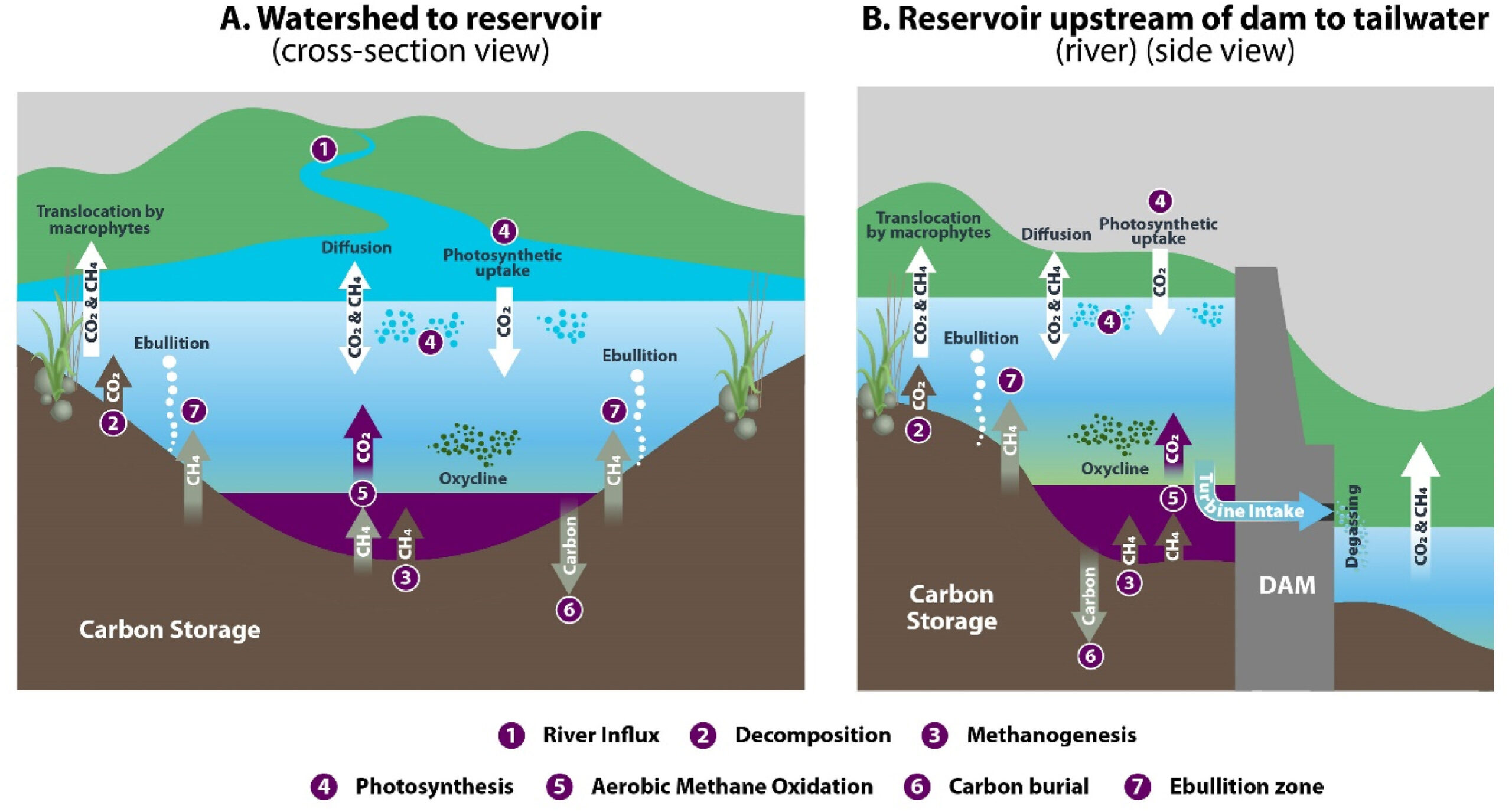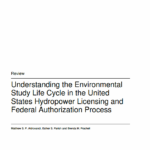Abstract: In the transition to low-carbon electricity, well-quantified estimates of carbon dynamics are needed to ensure that emissions reduction targets are achieved. We review the state of the science on carbon accounting for hydropower reservoirs and identify limitations and future solutions. Nearly all research on reservoir greenhouse-gas (GHG) emissions has focused on individual reservoirs in isolation without considering their position in a freshwater network draining organic matter from upstream watersheds or the coordinated operation of reservoir cascades. Second, carbon inventories have extrapolated from a small, non-probabilistic sample of highly variable measurements of GHG emissions to unsampled reservoirs. A stronger statistical foundation is needed to estimate a global inventory and its uncertainty. Third, attribution to hydropower is based on ranks assigned to reservoir purpose. Instead, the physical influence of hydropower on carbon dynamics could be directly measured. Fourth, current carbon-accounting practices neglect time. A time-varying approach would quantify variation in emissions for electricity portfolios from changes in the fuel mix at different times and account for ancillary services, i. e., the ability to support the grid when variable renewables are not available without using natural gas. Reservoirs also sequester a significant portion of inflowing carbon in sediments and slow the carbon cycle by delaying the return of carbon to the atmosphere for decades to centuries. Together, these refinements would help to illuminate pathways toward meeting energy demand with the longest-possible delay in returning carbon to the atmosphere and without adding ancient sources to the pool of carbon cycling through aquatic ecosystems.
Authors: Henriette I. Jager *, Natalie A. Griffiths, Carly H. Hansen, Anthony W. King, Paul G. Matson, Debjani Singh, Rachel M. Pilla

Fig. 1. Diagram showing contributions of terrestrial and other upstream sources of carbon to a reservoir (A. left), influx of carbon to the reservoir, and subsequent transformations, fate, and transport of carbon within the reservoir and downstream after passing through the dam (B. right). Note that most CO2 would have been emitted in a pre-reservoir case, whereas some fraction of methane (CH4) can be attributed to the presence of the reservoir.


